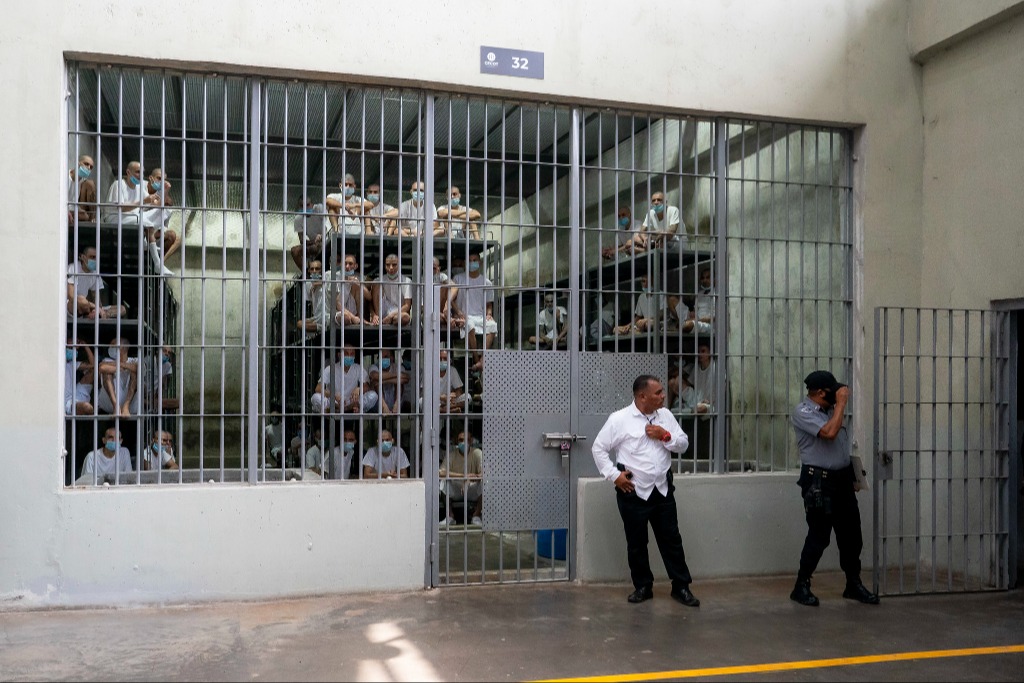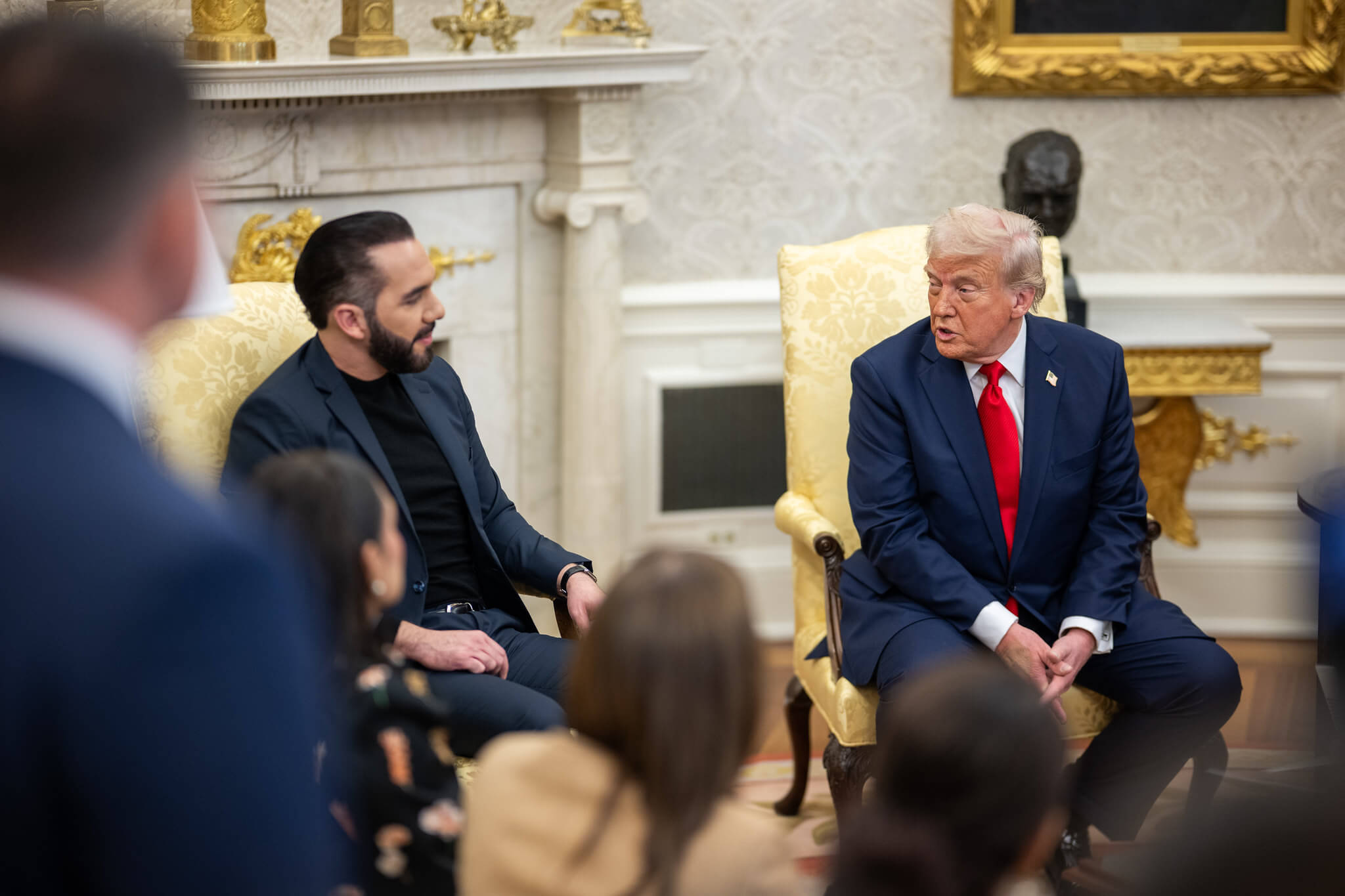Geoeconomics: The Variable Relationship Between Economics and Security
This is the second post in a series. Read the first part of the series here.
Published by The Lawfare Institute
in Cooperation With

This is the second post in a series. Read the first part of the series here.
There has been much consternation (particularly in the United States) about China’s use of geoeconomic strategies, meaning the “use of economic instruments to promote and defend national interests, and to produce beneficial geopolitical results.” Commentators have accused of China employing “debt-trap diplomacy” to gain control over strategic infrastructure abroad as part of its Belt and Road Initiative; using informal sanctions to coerce its neighbors; and establishing parallel international institutions, like the Asian Infrastructure Investment Bank, to undermine existing alternatives.
Whether or not these concerns about China are justified or overstated, it is important to note that geoeconomic strategies are not new, nor is their use one-sided. The United States has long used geoeconomic strategies, such as international institution building and employing positive and negative economic sanctions, to achieve its national interests. But in recent years, the United States has changed in how it understands its national interests and how prevailing ideologies and institutional structures have combined to affect its pursuit of those interests.
In broad-brush, stylized terms, the old International Economic World Order—which the United States helped establish—saw a relative divergence between the realms of economics and security with respect to trade and investment treaties. By contrast, in the newly emerging Geoeconomic World Order—which the United States is helping to usher in—the two are more explicitly converging in ways that have the potential to change the core of the international economic law regime. This post examines some of the causes of this relative divergence and convergence with particular reference to U.S. foreign policy.
The Relative Divergence of Economics and Security
Under the old International Economic World Order, trade and investment treaties involved a relative separation between the economic and security realms. Security was not absent from the trade and investment regime, but it existed on the margins. By that we mean that security was seen as a premise for the order (in the sense of being a justification for states entering into trade and investment agreements), and an exception to the order (in the sense that national security was one of a handful of exceptions permitted to trade and investment rules), but not as the rule that governed the regime’s core.
Security was a premise of the old International Economic World Order because international trade and investment treaties were partly justified on the basis that increased economic interdependence would promote peace and cooperation by increasing the costs of conflict between states. Peace was considered to be a likely product of increased trade, which in turn became a premise or justification for open trade. This theory was central to the formation of the European Coal and Steel Community and subsequently European Community after World War II. It also informed the postwar U.S. decision to extend security guarantees to Germany and Japan, so that those countries could focus on economic development in order to become strong participants in the multilateral world trading system without becoming strategic rivals.
Security was also an exception in the old International Economic World Order, but one that was largely unused. Most trade and investment agreements entered into after World War II included exceptions clauses for national security actions, though there was a split among the treaties as to whether these clauses were phrased as self-judging, and among states about whether self-judging clauses permitted good faith review. Either way, however, these clauses had little effect: states worked on the assumption that the exceptions should be narrowly construed and rarely invoked. States exercised self-restraint in invoking these clauses out of a fear of opening a Pandora’s Box: They knew that it was difficult to regulate and if the clause were invoked broadly, it would ultimately undermine the trade and investment rules.
But while security formed the premise of and the exception for the old International Economic World Order with respect to trade and investment treaties, it did not form the rule. Instead, the ordinary rules that underpinned trade and investment treaties followed an “economic mindset” rather than one focused on security. The economic mindset was primarily concerned with maximizing economic gains for states engaged in international trade and investment by increasing the efficiency of their economies. This was coupled with strong dispute-resolution mechanisms that empowered rule by lawyers rather than rule by politicians or diplomats.
According to classical economic theory, free trade is good because it allows states to play to their comparative advantage by concentrating on producing what they do best and trading for the rest. Free trade is therefore assumed to be a win-win situation: The size of the pie, and thus the slices of pie that could be claimed by each state, could be grown through cooperation. States might bargain fiercely over how the pie is divided, but the underlying assumption is that both parties are both able to “win” in absolute economic terms. (Of course, this reasoning has its critics, such as Dani Rodrik, who argue that many modern trade and investment agreements end up largely serving the interests of big multinationals.)
To effect the goal of increased economic efficiency, trade and investment treaties aimed to overcome economic nationalism—by, for instance, reducing protectionism and instilling the principle of nondiscrimination (which says states cannot favor domestic producers or investors to the detriment of foreigners). With an eye primarily trained on increasing efficiency, economies were restructured so that different states could focus on their comparative advantages. This resulted in complex global supply chains creating deep interdependencies across states, both friends and potential foes.
After the end of the Cold War, the old International Economic World Order was also characterized by a movement toward legalizing dispute resolution in the World Trade Organization (WTO) and depoliticizing investment disputes through the widespread use of investor-state arbitration instead of diplomatic protection. In both cases, the idea was to legalize decision-making and, where possible, insulate the economic realm from the vagaries of diplomacy and other foreign policy concerns.
The Strategic Backdrop
This relative divergence between the economic and security realms in the International Economic World Order occurred partly because the United States—its principal architect—did not view itself as having a simultaneous economic and strategic competitor during most of this period.
During the Cold War, the Soviet Union was a strategic competitor but, over time, it became clear that it was no match for the United States economically. Japan emerged as an economic competitor to the United States in the 1970s and 1980s, but it was a U.S. client state and security ally rather than a strategic competitor. Economic and security competitors existed, but largely did not overlap. In the words of Michael Mastanduno, “The principal security challenger was not an economic challenger, and the principal economic challengers were security allies. International economic and security relations seemed to be different games involving different major players.”
Ideological factors and institutional structures also contributed to this relative divergence over the course of the Cold War. In terms of security policy, U.S. Cold War power politics heavily emphasized military capabilities, and U.S. strategic thinking focused primarily on preventing the use of nuclear weapons. In terms of economic policy, neoliberal economic ideas became more prevalent in the United States in the 1970s and 1980s and they treated political intervention into markets with suspicion. Both these trends led to an increased divergence between the fields and their respective experts.
These ideological developments were matched by shifts on an institutional level that helped to separate and insulate economic policy from U.S. foreign policy more generally. Most prominently, in 1962, the precursor to the Office of the United States Trade Representative (USTR) was established as part of the Executive Office of the President of the United States. Charged with formulating and negotiating U.S. trade policy, USTR was established as a separate entity to remove trade policy from the auspices of the State Department in order to help insulate it from broader foreign policy concerns. According to Robert Blackwill and Jennifer Harris:
Roughly around the time of the Vietnam War, and continuing through to later stages of the Cold War, U.S. administrations began to see economics as a realm with an authority and logic all its own, usually no longer subjugated to traditional state power realities—and something to be kept free of unseemly geopolitical incursions in any case. As this shift occurred, international economic policy making, except for economic sanctions, began to emerge as the near exclusive province of economists and like-minded policy makers, no longer readily available to U.S. foreign policy strategists as a means of working America’s geopolitical will in the world.
Following the end of the Cold War, the United States achieved both strategic and economic predominance. The communist threat fell away, leaving capitalism as the ruling economic ideology of the day. The neoliberal economic model expanded rapidly internationally with the establishment of the WTO and the widespread signing of investment treaties, both of which sought to separate the market from political interference and to institute international judicial review of trade and investment disputes. This worldview was also globally disseminated by institutions such as the World Bank, which in the 1990s was providing the technical support for policies aimed at, among others, “getting governments better focused on the core public activities.”
Based on the security premise, and with an eye to economic gains, the United States welcomed former Soviet states and China into the world economy as a way to promote both peace and prosperity. Thus, the post-Cold War period saw both China and Russia join the WTO and enter into many investment agreements with binding dispute resolution.
Lacking a peer strategic or economic rival, the United States perceived its main security threat during this post-Cold War period to come from “rogue” states like Iraq and Iran and—after 9/11—from nonstate terrorist actors like al-Qaeda, the Taliban, and the Islamic State. The U.S. strategic focus was strongly trained on the Middle East and a succession of battlefield operations from Iraq to Afghanistan to Libya. As these states and nonstate actors were economically marginal, security and economics continued to be treated as relatively separate domains. Indeed, as one Chinese official is reported to have quipped, China’s grand strategy during this period was to “figure out how to keep you Americans distracted in small Middle Eastern countries.”
Of course, the separation of economics from politics and security in U.S. foreign policy was never complete. Despite many appeals to the value of depoliticization in the investment sphere, recent research highlights the occurrence of ongoing diplomatic interventions by the United States in investment disputes even when investment treaties with investor-state arbitration were in effect. Outside the trade and investment sphere, the most obvious use of economic statecraft during this period was the imposition of sanctions, which the United States used to target both rogue states along with individuals and corporations engaged in terrorism financing. But these were largely asymmetric tools that the United States could employ without significant fear of reciprocation or costs for its own economy.
The Increased Convergence of Economics and Security
From the U.S. perspective, the assumptions underlying the old International Economic World Order started coming under strain from around 2008 onwards, culminating in a clear change in U.S. economic and security strategy in 2017 and 2018. Security moved from being the premise and a relatively unused exception in the International Economic World Order to becoming a broadly invoked exception with the capacity to swallow the rule under the Geoeconomic World Order.
Whereas the “economic mindset” of the old International Economic World Order focused primarily on absolute gains, concerns about distribution and relative gains have played a key role in prompting the new Geoeconomic World Order. A focus on absolute gains often involves an assumption that everyone can be a winner (that is, a positive-sum game), whereas a focus on relative gains brings attention to where one party has gained more than another or where one party’s gain is seen as another party’s loss (a zero-sum game).
This focus on relative gains has played out in the transition between the old and new orders in two ways. First, the old order produced greater inequality within states, particularly in key developed countries like the United States and the United Kingdom that lacked strong redistributive policies. Anger over this inequality contributed to a backlash against economic globalization that has helped set the stage for the new Geoeconomic World Order.
Second, the old International Economic World Order produced greater equality among states—that is, an economic convergence that has changed the geopolitical balance of power. The relative convergence of the size of the U.S. and Chinese economies made the United States question the security premise underlying the International Economic World Order. This shift has occurred because the old regime led to the relative rise of a strategic rival for the United States, which has pricked America’s security concerns.
In the International Economic World Order, states often assumed that increased trade and investment would lead to peace because states that are deeply interdependent economically will not go to war with each other. But it is possible that the causation works the other way around. What if peace, instead of being a product of increased trade and investment, was in fact a precondition? On this theory, long periods of peace (typically associated with periods of hegemonic stability) enable the conditions that lead to increased economic interdependence. Indeed, the first wave of globalization from the 1870s was underwritten by U.K. hegemony, while the second and third waves from 1945 and the 1990s onwards were underwritten by U.S. hegemony.
Free trade is typically supported by the hegemon when it does not fear the economic growth of its strategic rivals. In such periods of relative peace, the hegemon can afford to focus primarily on its own absolute economic gains while largely ignoring changes in relative economic power. However, when there is sufficient convergence in terms of the relative size of the economies of the hegemon and its strategic rival—as has occurred between the United States and China—calls for free trade from the hegemon will weaken in favor of the adoption of greater protectionism.
This change occurs because economic power ultimately undergirds other forms of power, including military power, which are often understood by great powers in more relative or zero-sum terms. Thus, as economic power converges, the hegemon’s sense of security diminishes, and its attention shifts from a focus on absolute economic gains to a focus on relative economic and strategic power. This shift helps to explain the movement of the United States from supporting the old International Economic World Order to behavior that contributes to the development of the new Geoeconomic World Order.
In 2008, network theorist David Singh Grewal predicted that convergence in economic power caused by economic globalization would lead to a rethinking of the classical economic arguments in favor of free trade given shifts in relative economic—and therefore strategic—power:
As industrial rivals develop, the cries for free trade become weaker, both from the hegemon, now willing to forgo additional material welfare in return for greater relative security, and among its rivals, who may seek a strategic disengagement from the world economy in order to protect infant industries and support a mature industrial and military policy.
This is exactly what has come to pass. With this shift has come another realization: Interdependence may increase economic efficiency, but it can also generate strategic vulnerabilities, such as dependencies on foreign states for the supply of critical technologies necessary for the economic advancement and military capacity of great powers, or the use of supplies manufactured in foreign states that may have been tampered with at the source or en route. Moreover, interdependence is rarely symmetric, and key asymmetries can be exploited (or “weaponized” as Henry Farrell and Abraham Newman argue) as strategic leverage by the stronger party in that relationship of interdependence.
The shift from more of an “economic mindset” to more of a “security mindset” involves a shift from appeals to economic efficiency to calls for increased self-sufficiency, self-reliance and resilience. Concerns about interdependence are likely to be amplified when the economic competitor is also understood to be a strategic competitor. In such cases, economic convergence can lead to a reassessment of security threats and changed perceptions of security threats can lead to a rethinking of the virtues of economic integration. Instead of prioritizing interdependence for the gain of economic efficiency, strategic competitors may well seek to decouple to some extent to limit vulnerabilities that come from connection.
The Changing Strategic Environment
U.S. grand strategy has long been premised on preventing a regional hegemon developing in the crucial Eurasian region, whether that be Germany during World War II, Russia during the Cold War or China today. Given that Eurasia holds the bulk of the world’s people and resources and is likely to be the most dynamic region in the coming century, the United States cannot afford to be shut out of trading and shipping in this region. In order to maintain its foothold in this pivotal area, U.S. economic action has resorted increasingly to a geoeconomic toolbox in which economic measures are deployed with the purpose of enforcing political goals.
Although the U.S.’s focus on China has reached a high point in recent years, this change reflects a longer-term recognition of the need to shift America’s focus to Asia in general and China in particular. For instance, prior to 9/11, President George W. Bush had begun laying the groundwork for a shift in U.S. focus from the Middle East to Asia and from the battlefield to economic competition, though these moves were overwhelmed by the subsequent War on Terror.
In 2008, the United States began negotiating the Trans-Pacific Partnership Agreement (TPP), partly as a measure to counterbalance China’s growing influence within the region. Concerns about the security implications of foreign investment, particularly though not only coming from China, led to a marked uptick in the investment screening activity of the Committee on Foreign Investment in the United States (CFIUS) post 2007-08 (see Figure 1). Yet the U.S. approach to China continued to follow a dual track, with the U.S. Treasury Department promoting a policy of cooperation (following the “economic mindset”), while the Department of Defense increasingly moved toward a strategy of what many have interpreted as “checking” or “containing” China’s rise (reflecting a “security mindset”).

Data sources: 1988-2005; 2006-2008; 2008-2015.
President Obama announced the U.S. “Pivot to Asia” in 2011. As U.S. Secretary of State Hillary Clinton explained: “The future of politics will be decided in Asia, not Afghanistan or Iraq, and the United States will be right at the center of the action.” Clinton also announced the need for the United States to develop better “economic statecraft” policies. In this vein, Obama urged the Senate to ratify the TPP on the basis that “if we don’t write the rules, China will.” U.S. Secretary of Defense Ashton Carter declared, “in terms of our rebalance in the broadest sense, passing TPP is as important to me as another aircraft carrier.” U.S. commentators began citing national security and geopolitics as a justification for negotiating and passing the TPP.
Having weathered the 2008 global financial crisis well, China became more confident and assertive. Starting in around 2010, China began more extensive efforts at policing the South China Sea and building up islands or features to extend its military capacity. In 2013, partly in response to its lack of significant voting power in existing international institutions like the International Monetary Fund, China helped to establish the New Development Bank—led by Brazil, India, China and South Africa (BRICS)—and the Asia Infrastructure Investment Bank. It also announced its ambitious Belt and Road Initiative to develop investment and infrastructure routes across Eurasia and beyond. In 2015, China declared its Made in China 2025 plan, which sought to stimulate the country’s capacity to innovate and produce cutting edge technology.
On assuming office in 2017, President Trump withdrew the United States from the TPP. But the Trump administration has doubled down on viewing China as an economic and strategic threat and has forcefully injected national security concerns into the core of the trade and investment regime.
In December 2017, the U.S. National Security Strategy deemed China a “revisionist power” and a “strategic competitor” that uses “predatory economics” to intimidate its neighbors and declared that “economic security is national security.” The U.S. expressed similar sentiments in the 2018 U.S. National Defense Strategy and in the U.S.-China Economic and Security Review Commission’s 2018 report to Congress, which identifies “China’s state-led, market-distorting economic model” as a key “challenge to U.S. economic and national security interests.”
In 2018, Trump imposed tariffs on steel and aluminum and blocked foreign investments in critical infrastructure, both based on national security claims, among other justifications. Likewise, the U.S. National Defense Authorization Act for 2019 declares that “long-term strategic competition with China is a principal priority for the United States,” and required the integration of “economic, intelligence, law enforcement, and military elements, to protect and strengthen national security.” This strategy includes examining China’s efforts to invest in sensitive US industries and develop investment and infrastructure projects abroad.
Then, in October 2018, Vice President Mike Pence made a speech that many have interpreted as starting a new Cold War with China. The next month, Pence reminded members of the Asia-Pacific Economic Cooperation (APEC) forum that the U.S. offers them “a better option” compared to China’s “constricting belt [and] one-way road.”
In summary, what could have remained a sublimated economic rivalry between the United States and China has now mutated into an explicit geopolitical contest that is playing out in significant measure in the international economic law sphere. The result is a strategic rivalry that is both born of and has spilled over into the economic sphere, setting the stage for a new Geoeconomic World Order based on a greater structural integration of security and economics.







